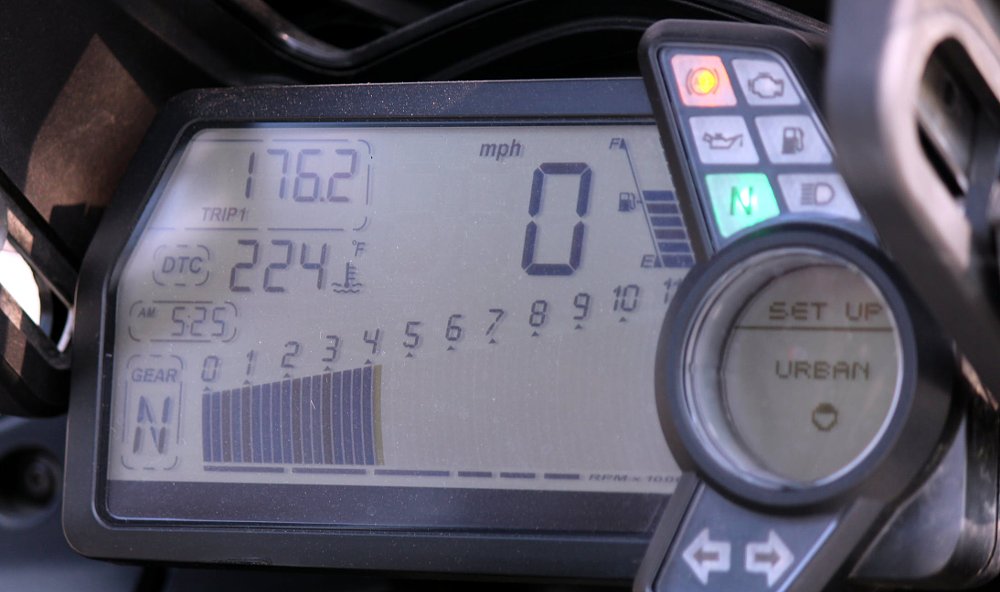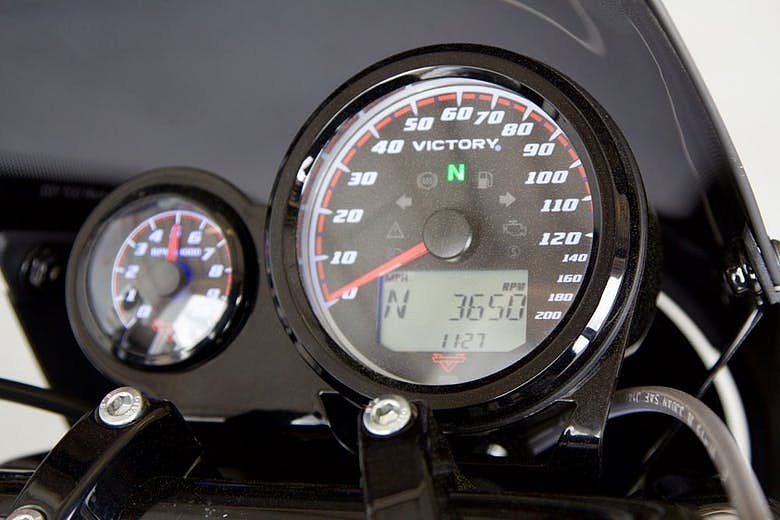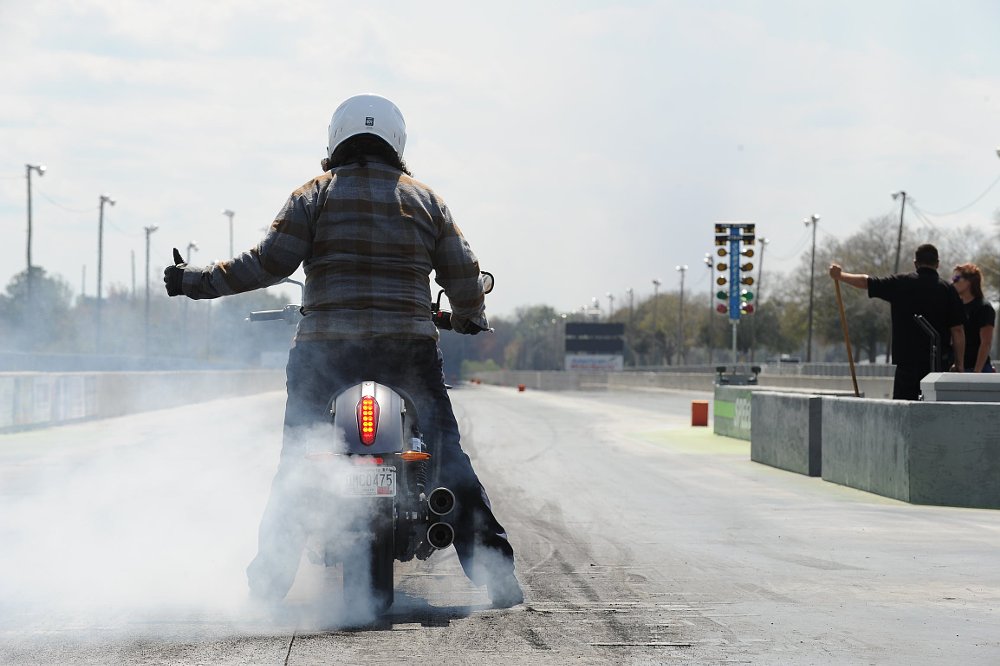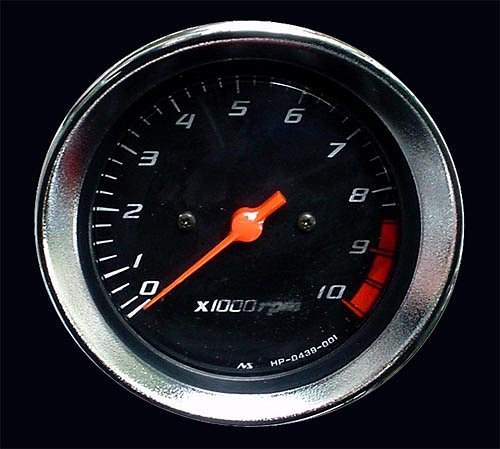Short answer: Yep. Redline your engine with impunity if you so desire.
Longer answer: Redlining is OK, provided you're doing it in a specific sort of way. Banging off the rev limiter is bad, revving the snot out of an unloaded engine is bad, and riding around with the engine at full song for no reason is... well, not bad, but it's not great. Effectively, it's up to you to know the difference between "use" and "abuse."
I grow weary of this topic, simply because I think there are a lot of people opining about it who may not have the necessary mechanical expertise to opine intelligently. Just so we’re clear here, Merriam-Webster calls redlining “a recommended safety limit, the fastest, farthest, or highest point or degree considered safe; also, the red line which marks this point on a gauge.” OK. That seems pretty logical. But I get this weird feeling that lots of people running their gums about this haven't built or torn down many engines, so their practical knowledge may be outweighed by their theoretical knowledge. I like to think I bring a little of both to this topic. So why do I say it’s safe to redline your engine? There are a few reasons.

It’s built to be redlined
Contrary to what you may read, if you are on a production engine, your engine wasn’t just slapped together. Engineers planned it to have some very specific operating characteristics and then chose components and designs to yield those characteristics. One of them is how fast the engine can spin. This is often determined by a number of things: the valve spring pressure, pushrod deflection under load, piston velocity… all sorts of factors. All of those could theoretically cause a limit. If, for example, the change in velocity became too much for the connecting rod to bear, then catastrophic failure would mark the point at which an engine could no longer keep turning. If, on the other hand, the valves began to float because of insufficient valve spring pressure in a freewheeling engine design, then the engine will simply hit a certain rpm and go no higher. And if the engine was not of the freewheeling design? Than perhaps valve-to-piston interference would be the factor that signaled the end to the high-rpm party.
The engine is designed to have an operating range. Redline simply indicates the maximum speed your manufacturer thinks is safe for you to ride. Anywhere within the range is fair game.
There is a margin of error
I mention this because the OEMs do test destructively. If you think they set the redline right at the point of total engine destruction, you’re not thinking critically. A very large margin of error is integrated, as well, and this can be confirmed by countless riders who’ve over-revved past redline to no ill effect.
Remember, these engines (for the most part) carry warranties. It’s hard to warranty something if you tell a customer it’s OK to run it to the ragged edge of destruction as part of “normal operation.” The easiest way to prevent over-rev damage is simply set the limit between “revving” and “over-revving” comfortably lower than that actual point, and paint a line on the tachometer in an arbitrary safe spot.
You’ve probably got a safety net
There's an electronic savior beyond the redline.
I can’t think of a single street-legal motorcycle on a sales floor that does not have a rev limiter built into it — and that’s been the case for quite a while now, probably almost 20 years. Rev limiters cut either fuel or spark in order to prevent an engine from continued operation past a given rpm. The rev limiter is generally set noticeably past redline. Some are “hard,” simply kicking in at a set point, cutting fuel or spark completely. Others are “soft,” meaning fuel is cut partially (or ignition is retarded) so the refusal of the engine to keep spinning faster is not felt as an abrupt “wall.”

Fuel cutting and spark cutting both have their downsides. Fuel cutting can cause high engine temperature due to the lean operation of the engine, and spark cutting allows unburned fuel to be released into the exhaust, where it can ignite and damage the exhaust and catalytic converter.
And some motorcycles have a rev limiter set at a lower speed when the bike is in neutral. A free-running unloaded engine can be damaged more easily than a loaded one. Your engine revs faster without a load, increasing the chance of a terminal over-rev situation.
In the old days, your rev limiter was often your right wrist and the stuff between your ears. Now we have rev limiters, but recognize rev limiters have limits, too.
High revs are not universally bad
High revs often provide good vacuum signal (the "suck" that helps the fuel enter the venturi) to carburetors (if a bike is so equipped) and also can smooth out vibration and produce good power, depending on factors like engine layout and cam selection. Higher revs in a given gear can also provide better response if a sudden increase in velocity is needed, and high rpm can also provide superlative engine braking, if your riding style lends itself to it.
Spurg is perhaps one of the best riders I’ve ever met when it comes to keeping his bike in the correct gear to supply power; I don’t think I’ve ever heard him lug an engine. Consequently, he’s able to reduce his reaction time because he doesn’t have to yank the clutch and click down a gear or two. Be like Spurg.
Speaking of lugging...
Lugging is awful
At the opposite end of the spectrum, lugging an engine is horrible on it. It hammers parts that don’t want to be hammered. Wristpins, con rods, cranks, big end and little end bearings, and the main bearings all take one hell of a beating during engine lugging. The reason for this is that at low engine speeds, spark is retarded significantly from max advance, and the gasoline burns (at a set pace) before the piston has moved very far from the top of the stroke, where the combustion gases acting on the piston have their worst leverage due to the angle of the con rod. Effectively, the burning air and fuel are channeling their energy into wearing out your engine, not turning your motorcycle’s wheel.
The second part of this that makes a bad situation worse is that at low rpm, oil pressure is often quite low, reducing the thin film that protects and cushions all those bearing surfaces from this very type of impact.
And the nice part of riding in a higher gear is that the ride is often nicer; vibrations often melt away and the “chugging” feel vanishes. I feel like many Harley riders are especially guilty of lugging. I think part of that comes from habit, part of it comes from Harley’s famous low-end torque, and part of that also comes from the noise a typical H-D that’s been uncorked makes. Once a set of louder pipes have been installed, it’s been my experience that most riders tend to badly overestimate how far along in the rev range they are.
Now for all that having been said, I’m not as pro-redline as this first part of the article might have made me sound. Here’s a few reasons why I’m usually against getting too rev-happy.
There’s a difference between hitting redline and bouncing off the rev limiter
This is a pretty important distinction. Hitting redline is natural. If you’re bangin’ gears during a spirited riding event and your bike makes big top-end power, you’ll naturally hit the redline as you near it. That’s a bit different than the person who just sits there with the throttle wound out, either overspeeding the engine and not upshifting, or perhaps is just banging it repeatedly off the rev limiter. One is a quick trip into the forbidden zone, the other is staying for a meal, asking for a wine list, and starting with a salad.

That 2 a.m. burnout you did in the campground to impress your buddies on an ice-cold bike (and maybe a few ice-cold beers)? Not good, friend-o.
Getting too comfortable upstairs in the rev range can make it possible to do something your bike can’t stop
Everything we mentioned so far has been about capping the engine’s speed on the way up the tach. But there’s one thing your bike's rev limiter can’t stop, which is mechanical overspeeding. Basically, that’s when the rear wheel mechanically forces the engine to spin too quickly. If you’re downshifting too quickly, or you’re riding near redline and accidentally downshift, it’s possible to force your engine to spin way faster than it wants to. As long as transmissions are directly controlled manuals (as most motorcycles are), this is a very real possibility, with no electronic savior to step in and keep Bad Things from happening.
You're wearing shit out faster and wasting fuel
If you’re not racing, why not put the bike in a higher gear and save the stress on the drivetrain and burn less of your gas? An engine physically turns the crank more times at high revs than at lower ones. Granted, they may be easier turns due to gearing and momentum, but friction is cumulative. You only get so many revolutions before it's rebuild time. Why hasten the demise?

It’s not necessary on many bikes
Have you ever been on a motorcycle that came from the factory with no tach? That’s not to leave you confused. Instead, the tach is not present often because the designers felt that the bike would be ridden in such a fashion that it would likely not be needed. Similarly, the lack o' tach may also mean the bike was not intended to be used near the redline very often. Low compression singles and V-twins are both good examples of engine layouts that usually don’t respond well to high revs. They’re not happy at high rpm, generally don’t perform well there, and most people are able to figure out quickly when they're way upstairs in the powerband that they’re making noise without making much power. As such, don’t venture too far up the tachometer without good reason if you've got a slowpoke tiddler or clunky old low-stress mill.
You’re not on a track most of the time
Do you really need to wring your bike out to redline on the street? Probably not often. If you’re regularly whackin’ the redline on a middleweight or larger, you might be riding like a ruffian. Just sayin’. And cops have sonar for high revs, I swear.
And if you are on a track, you don’t want to bounce off the rev limiter
I don’t care what your bike is, no motorcycle makes peak power when its fuel and/or spark is being arbitrarily cut, which is exactly what your rev limiter does. It’s the equivalent to spinning your tires on a holeshot. If you’re not accelerating, you’re spinning, which is wasted power. Same thing with the rev limiter. If you’re hitting it, your engine is not making as much power as it could to turn the back tire.
For most people and most motorcycles, hitting the redline every now and again shouldn’t be an item of concern. However, hanging out there on the reg ain’t really beneficial, so you shouldn’t see much of a need to redline your bike all the time. Remember: after the warranty runs out, it's up to you to know what the difference is between "use" and "abuse."











